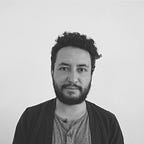GUSAC: Gutenberg Sound Art Academy 2019
Day 1
Today was the first day of the International Sound Art Summer School 2019 at the Johannes Gutenberg in Mainz, Germany, GUSAC for short. It is an initiative of the master’s program of Sound Art composition in the College of Music, together with the A.R.S (Art. Research. Sound)
For this first iteration Profeesor Peter Kiefer, the brain behind this whole initiative, invited Bernhard Leitner (Vienna), Miya Masoaka (New York) to teach a selected number of participants interested in the growing discipline of Sound Art. Others artist and scholars in the differnet related field to sound art are taking part too and will expose their ideas in detail in the Symposium at the end of the week.
During the first part of the day, Prof. Kiefer introduced us to the city of Mainz, the Johannes Gutenberg University and some regulations about the campus. Short after we were taken to an ear opening tour through the top-of-the-art facilities of the Music School and the sound installations that were set-up in there.
The main teachers (Leitner, Masoaka and Kiefer) had prepared installations around the building. Moreover, some of the participants of the course had the opportunity to showcase their installations.
Some of the pictures show the variety found in some of these works.
Bernhard Leitner
It is clear that one of the main attractions of the academy is the privilege to count with the prescience of a living legend such as Bernhard Leitner. His career in the “sound art” spans from almost 50 years now, and I say “sound art” in quotes, because the tern was not really coined by the time he started to work in his first installations with multiple speakers, around 1971. He gave a very insightful lecture during the second part of the day, where he showed, not only the progress of his practice during his early years, but also his sketches and thought processes that led him to explore sound as a material to create spaces. The details of this one single hour and a half lecture gave me material to potentially write a 5000 word text, but lucky for you, I won’t do that right now.
After the talk, he finally demonstrated one of the pieces he has on display in the facilities of the Music School, the Wooden cube, an eight-channel installation consisting of wooden plates with transducers attached to them. Students had the opportunity to listen to different “spaces” within this cube and then discover the differences within the sonic spectrum when sound is reproduced (transduced?) through these long wooden plates–how the plates vibrate with low frequencies and how the sound does not propagate so dramatically in the space, in comparison with how say, a Wave Field Synthesis system.
At the end, Leitner made a very promising observation about his piece: The wooden block is not an installation, rather an instrument. Students have the opportunity to reproduce their own sound and experiment with the installation–to play the instrument he has created. So while I’m writing this, my mind is salivating with ideas coming back from my previous pieces: Should I play sharp percussive high frequencies, loud sine sweeps and white noise bursts patters, or maybe blast the wood with swirling sounds generated by chaotic oscillators?
The answer will be there tomorrow….
